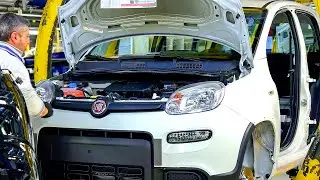Honda HR-V Crash test
The passenger compartment remained stable in the frontal offset test. Dummy readings indicated good protection of the knees and femurs of both the driver and passenger. Honda showed that a similar level of protection would be provided to occupants of different sizes and to those sat in different positions. In the full width rigid barrier test, protection of the driver was good, apart from the chest, protection of which was adequate. Adequate protection was provided to the neck and chest of the rear passenger dummy, and good protection to the head and femurs/pelvis. The HR-V scored maximum points in the side barrier test, with good protection of all body regions. Even in the more severe side pole impact, protection was good for all critical parts of the body. The seats and head restraints provided marginal protection against whiplash in the event of a rear-end collision. A geometric assessment of the rear seats indicated a good level of whiplash protection for occupants of those seats. The HR-V has a standard-fit autonomous emergency braking system which provides additional protection at the low speeds at which many whiplash injuries are caused. The system performed well in Euro NCAP's tests but the score could not be included in the assessment as the front seat whiplash protection was not rated as good.
The HR-V scored maximum point for its protection of the 11⁄2 dummy in the dynamic impact tests. In the frontal offset test, forward movement of the 3 year dummy, sat in a forward-facing restraint, was not excessive, although chest and neck decelerations were marginally elevated. The front passenger airbag can be disabled to allow a rearward-facing restraint to be used in that seating position. Clear information is provided to the driver regarding the status of the airbag and the system was rewarded. All of the restraint types for which the HR-V is designed could be properly installed in the car, with the exception of the Group I universal restraint, which was not stable when installed in the rear centre position.
The HR-V scored maximum points for the protection provided by the bumper to pedestrians' legs. Protection of the pelvic region was more mixed with good and poor results recorded. The protection provided to the head of struck pedestrian ranged predominantly from marginal to good, with some weak and poor results recorded on the stiff windscreen pillars.
Electronic stability control is standard on the HR-V together with a seatbelt reminder for the front and rear seats. A lane departure warning system and a speed assistance system are both options which are expected to be widely fitted, so qualified for assessment by Euro NCAP. An autonomous emergency braking system which operates at highway speeds is not currently available.
If you love cars, you should subscribe now to official YouCar's channel: http://urlz.fr/lEd
Go! It's free!
All the Best.
Watch video Honda HR-V Crash test online, duration hours minute second in high quality that is uploaded to the channel YOUCAR 15 November 2015. Share the link to the video on social media so that your subscribers and friends will also watch this video. This video clip has been viewed 429,108 times and liked it 1.3 thousand visitors.



















